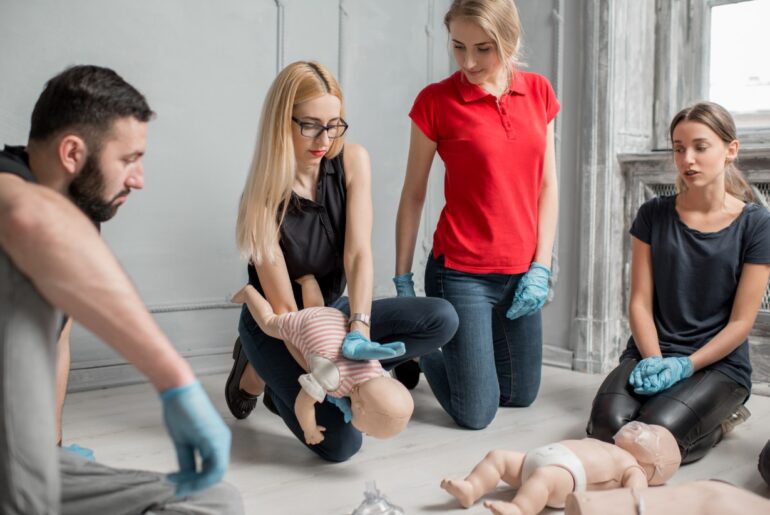When it comes to child care, safety is the top priority. Accidents can happen in the blink of an eye, and being prepared to respond promptly can make all the difference. This is where CPR (Cardiopulmonary Resuscitation) and First Aid training come into play. Acquiring these essential skills not only boosts your confidence but also equips you to handle emergencies effectively.
Understanding the Basics
CPR and First Aid training, like the one provided by MyCPR NOW, offers you the foundational knowledge to handle various situations, from minor injuries to life-threatening incidents. CPR is a life-saving technique that involves chest compressions and rescue breaths to revive a person whose heart has stopped beating.
First aid, on the other hand, encompasses a wide range of techniques to address injuries such as cuts, burns, fractures, and more.
Tailored for Child Care

CPR and First aid training tailored explicitly for child care providers delve into scenarios commonly encountered while looking after children. These programs focus on the unique needs and vulnerabilities of children, including infants and toddlers. Participants learn how to recognize signs of distress, administer appropriate interventions, and provide care until professional help arrives.
Choosing the Right Course
Numerous organizations offer CPR and First Aid certification courses. When selecting a course, ensure that it is accredited by reputable bodies. These certifications are widely recognized and reflect a high standard of training. Consider whether the course covers child-specific topics and if it offers hands-on practice, as these elements are crucial for effective learning.
Course Components
CPR and First Aid courses for child care providers typically cover a range of topics, including:
- Child-specific injuries ─ Learn to assess and manage injuries commonly faced by children, such as falls, cuts, and choking incidents.
- Cardiac emergencies ─ Understand how to recognize signs of cardiac arrest in children and perform CPR appropriately.
- Respiratory issues ─ Gain insights into dealing with breathing difficulties, asthma attacks, and allergic reactions.
- Conscious choking ─ Learn techniques to help a choking child, adjusting the approach for different age groups.
- Emergency action plans ─ Develop the ability to formulate and execute effective emergency plans in childcare settings.
Benefits Beyond Child Care

While the focus of these courses is child care, the skills you gain have a broader application. They can be invaluable in everyday life and could potentially save the lives of anyone in need. Additionally, having CPR and First Aid certification could enhance your employability, as many employers value candidates with such life-saving skills.
Conclusion
CPR and First Aid training for childcare providers is a crucial step toward ensuring the safety and well-being of the children under your care. By enrolling in accredited courses that cover child-specific scenarios, you equip yourself with the tools to handle emergencies with confidence and competence.
These skills extend beyond the realm of child care, making you a valuable asset in any situation requiring immediate intervention. Remember, being prepared today can make all the difference tomorrow.

